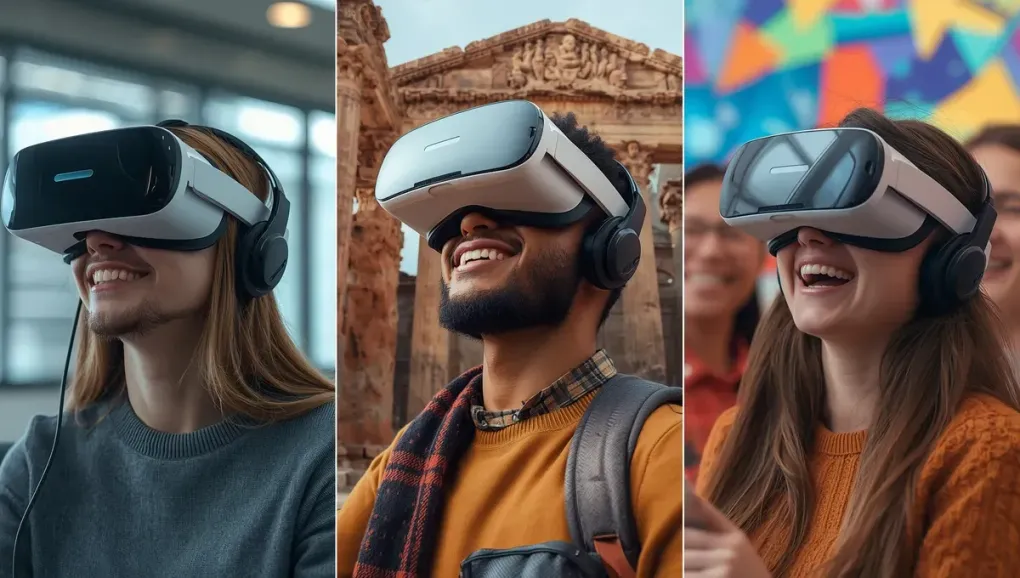
The Reality of VR: Is 2025 the Year of Mainstream Immersion?
For decades, Virtual Reality has been the technology of tomorrow, perpetually on the cusp of a breakthrough that never quite arrived. Enthusiasts have championed its potential, while skeptics pointed to clunky hardware, prohibitive costs, and a lack of compelling content. But in 2025, something feels different. A confluence of technological advancements, expanding applications, and strategic investments suggests that VR might finally be shedding its niche status and stepping onto the path of mainstream adoption. The question is no longer if VR will change our lives, but when and how profoundly.
This isn’t just about better graphics; it’s about a fundamental shift in how we interact with digital worlds, blurring the lines between the virtual and the real in ways we’re only beginning to comprehend.
The Hardware Evolution: Lighter, Sharper, Freer
The most immediate and impactful change driving VR’s ascent is the rapid evolution of its hardware. Gone are the days of tethered, heavy headsets that induced motion sickness. In 2025, wireless standalone headsets like the Meta Quest 3 and Apple Vision Pro are leading the charge, offering high-resolution displays, wider fields of view, and significantly reduced latency. This freedom of movement, combined with increasingly sophisticated inside-out tracking, makes VR experiences more comfortable and intuitive than ever before.
Beyond visuals, multi-sensory technology is enhancing immersion. Haptic feedback gloves and suits are becoming more affordable, allowing users to feel virtual objects and textures. Eye-tracking technology, once a high-end feature, is now standard, enabling more natural interactions and foveated rendering that optimizes visual fidelity where the user is looking. These advancements are crucial for making VR feel less like a gadget and more like a natural extension of our senses.
Beyond Gaming: VR’s Expanding Horizons
While gaming remains a powerful driver of VR adoption, the technology’s true potential lies in its expanding applications across diverse sectors:
- Fitness and Wellness: Immersive VR fitness platforms like Supernatural and FitXR are transforming exercise into engaging, gamified experiences. Users can box in virtual arenas or cycle through fantastical landscapes, making workouts more enjoyable and consistent.
- Education and Training: VR is revolutionizing learning by providing immersive simulations for medical students, engineers, and even fire service personnel. Students can practice complex procedures in a risk-free environment, leading to higher knowledge retention and engagement.
- Healthcare: Beyond training, VR is being used for pain management, phobia therapy, and cognitive rehabilitation. It allows patients to confront fears in controlled settings or relearn daily tasks in a safe, virtual space.
- Remote Work and Collaboration: Platforms like Meta Workrooms and Apple’s personas are enabling more natural and engaging remote meetings, fostering a sense of presence that traditional video conferencing lacks. This is critical for global teams and distributed workforces.
- Social Platforms: Virtual worlds like VRChat and Rec Room are evolving into vibrant social hubs where users create avatars, explore user-generated content, and form communities, offering deeper social interactions than traditional online platforms.
The Roadblocks to Ubiquity: Challenges Remain
Despite these advancements, VR still faces significant hurdles to true mainstream adoption:
- Motion Sickness: While improved, some users still experience discomfort, which can be a barrier to prolonged use.
- Privacy Concerns: VR systems collect highly intimate biometric and behavioral data (eye movements, gestures). Ensuring robust privacy protection and user control over this data is paramount.
- Content Ecosystem: While growing, the breadth and depth of compelling, non-gaming content still needs to expand to attract a wider audience beyond early adopters.
- Affordability: While prices are dropping, high-end headsets remain a significant investment for the average consumer.
- The “Killer App”: The industry is still searching for a universal application that provides broad utility across infinite use cases, similar to how web browsers or social media drove PC and smartphone adoption.
The Future is Immersive: A New Computing Paradigm
In 2025, VR is no longer a futuristic fantasy; it’s a tangible technology with a clear trajectory towards mainstream relevance. The convergence of lighter, more powerful hardware, increasingly diverse applications, and growing investment from tech giants signals a new era. While challenges like motion sickness and privacy need continuous attention, the industry is actively addressing them.
VR is poised to become more than just an entertainment device; it is evolving into a new computing platform, fundamentally changing how we work, learn, socialize, and experience the world. The journey to ubiquitous immersion is well underway, and the coming years promise to redefine our very concept of reality.


